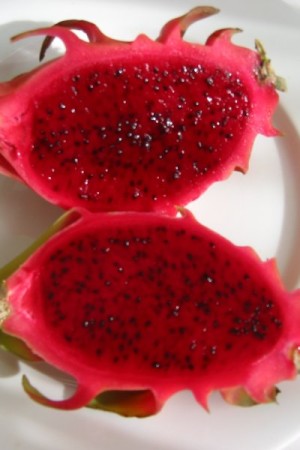
Serendipity: noun; an aptitude for making desirable discoveries by accident
When it comes to getting my toddlers excited about new and unique foods, I will do most anything. The easiest method is a no-brainer. Since children are curious by nature, simply observing their parents enjoying a new food can really pique their interest. Don’t forget that displaying some enthusiasm, talking about the food (color, shape, texture, flavor, history, etc), and tactile exploring are great ways to introduce new foods. Sometimes, a child will want to expand their culinary horizons on their own accord. Recently, I was surprised when my ultra-finicky child did just that with a piece of an exotic fruit that I hadn’t seen in years.
On the tail end of grocery shopping, the circus that is me with my two loud and publicly unpredictable toddlers strolled through the produce area admiring the usual bounty. My demure Kate spotted something interesting, “Momma, what’s dat?” I looked to see her pointing to a unique, beautiful fruit with, frankly, a spectacular appearance. I swear it whispered “tropical” to me as I approached. Glamorous hues of red and green. Baseball sized with leaves somewhat resembling that of an aloe vera plant.
It looked vaguely familiar. Not because I spotted it in some warm vacation locale, but interestingly enough because I had written an extensive research paper on this exact fruit back in my college days (circa 1995). “Well hello Ms. Dragonfruit, we finally meet again after all these years.”
Back in my student days, I knew her as “Pitahaya”; apparently this was the not-so-sexy alias that she went by on occasion. Back in the day, my professor Dr. Holmes was quite enthusiastic about the subject matter. In fact, she had even taken it upon herself to order some for me to analyze with various thingamajigs like a Colorimeter and Spectrophotometer. Yeah, that sounds all intellectual, but the most important test of all, at least in my book, was the taste test. (Some things never change!) There was no way I could forget this fruit after our collegiate relationship-of-sorts. Serendipitous indeed.
My little Kate picked up one of the fruits, gently stroked the skin, and handed it to up to me. You will come to find out that any, repeat ANY, opportunity to capitalize on interest shown by my toddlers in a food item is reason for celebrating. Kneeling down to her level, I explained with wide-excited eyes and a strong sense of importance, “This is called a Dragonfruit. It’s a pretty pink fruit that Ballerinas looooove to eat.” (Note: A common tactic of mine to help ‘Miss Particular’ warm up to various new ideas, including foods, is to reassure her that her highly esteemed Princesses, Fairies, Ballerinas, or basically any and all pink-wearing-beings approve of said item.)
Surprisingly, she bought my description (or ploy rather), and asked for a taste. Viola! The clouds parted. My baby girl was expanding her palate! The produce staff obliged our request for sampling and cut one of the gems in half. The brilliant color was just shy of an applause, it was *that* gorgeous. The pulp was an intense fuchsia hue with little black seeds…think kiwi fruit but with a “big fancy neon pink dress”.
I ate a slice in front of my wee ones with bit of embellished excitement…a little bit of jumping up and down, many drawn out “mmmms” and several “yum-yums” were added in attempt to appeal to my tough audience, ahem, my toddlers. Hey now, don’t judge! Whatever it takes. So what if I was in public acting like a moderate lunatic over fruit. This fruit was fantastic. In fact, I had a history with it and really wanted my kids to try it.
A few passersby caught glimpses of my antics and the dazzling, just-shy-of-neon fruit and gathered for samples. So there. My influence was working on *some* folks (at least let me think that). I proceeded with the litmus test. Carter begrudgingly refused a slice already satiated from earlier treats, but dear Kate was willing, even so much as extending her hand up to accept the slice from the produce guy. She nibbled in her delicate way, looked up at me and said “mmm, dwag-fwuit”. She then proceeded to eat three more slices as I finished my shopping. Victory!
On the drive home, I racked my brain wondering if there was any plausible chance at all that I had saved THE dragonfruit paper. Maybe it was somewhere in the abyss of my garage. I quickly talked myself out of ransacking the garage for some random archaic paper. Chances were good that I still had it either in a box or on (brace yourself!)…. a floppy disk. Yes, I’m that old.
See, my husband calls me a “food literature pack rat” and has given me much grief regarding the asinine number of boxes in our garage. Said boxes contain college coursework from my nutrition and foods classes, menus, random food articles, old Gourmets, etc from many years past that I just can’t bear to part with. Truth be told, therapy might be in order if I actually had to ditch them at some point. But as this experience shows, my massive collection of food literature might be there for a reason (Matt, honey, are you listening?).
Being of idealistic nature, I thought I would just poke around for a minute or two. I dusted off one box of old coursework and low and behold, there it was. No joke. I still can’t believe it. Divine intervention? Possibly. 10 dusty pages under my maiden name. Facts, reflections and experimental data all on the lady in red: Pitahaya, um, I mean Dragonfruit.
For your reading pleasure: here are some brief stats on the Dragonfruit courtesy of research conducted EONS ago by moi…pre-husband, pre-babies, pre-domestic bliss, well, sort of.
Dragonfruit Primer:
- Alternative name: Pitahaya
- Growing location: Southeast Asia, Mexico, Central and South America, and Israel
- Type of cactus
- Color combinations: pink skin with white flesh, pink skin with red/fuchsia flesh, yellow with white flesh
- Nutrition: Low in calories, numerous nutrients, including Vitamin C, phosphorus, calcium, plus fiber and antioxidants
- Flavor: sweet and crunchy like a cross between kiwi and pear
- Edible black seeds; like a kiwi
- Composed of mostly water
- Inedible skin/rind
- Determining ripeness: look for bright, even-colored skin. If the fruit has a lot of blotches, has a very dry, brittle brown stem, or brown on the tips of the “leaves”, it may be over-ripe. Hold the dragon fruit in your palm and try pressing the skin with your thumb or fingers – it should give a little (like a ripe kiwi), but shouldn’t be too soft or mushy. If it’s very firm, it will need to ripen for a few days.
- Eating: Fresh, juice, Fruit salad, smoothies, frozen drinks (very easy to blend)
- Little Kate Margaret intrigued by the “pretty princess fruit that matches”.
- Whole
- Halves with rind still attached.
- White fleshed
- Bright fuschia fleshed
Thank you for reading!
Do you have a favorite type of exotic produce and have you shared it with your children? What was their reaction?



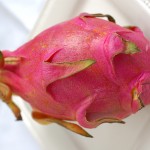
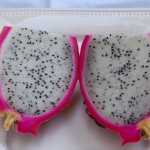
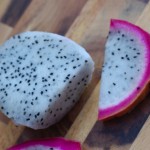
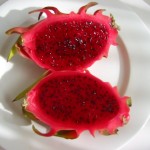
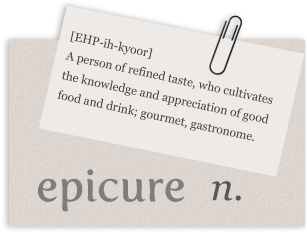





“dwag-fruit” Love it!!! Great writing friend!
Great story! Nice site. I’m proud to know you. xo
One of our absolute favorites! Wish we could grow dragon fruit here in the Northwest.
Love this Nance! I always have fruit quiz with my nieces and find myself doing the same crazy overly-excited routine with fruit. (My favorite destination is any local asian market). If they try just a bite I’ve succeeded! Heck, if they even know what its called I’ve succeeded!